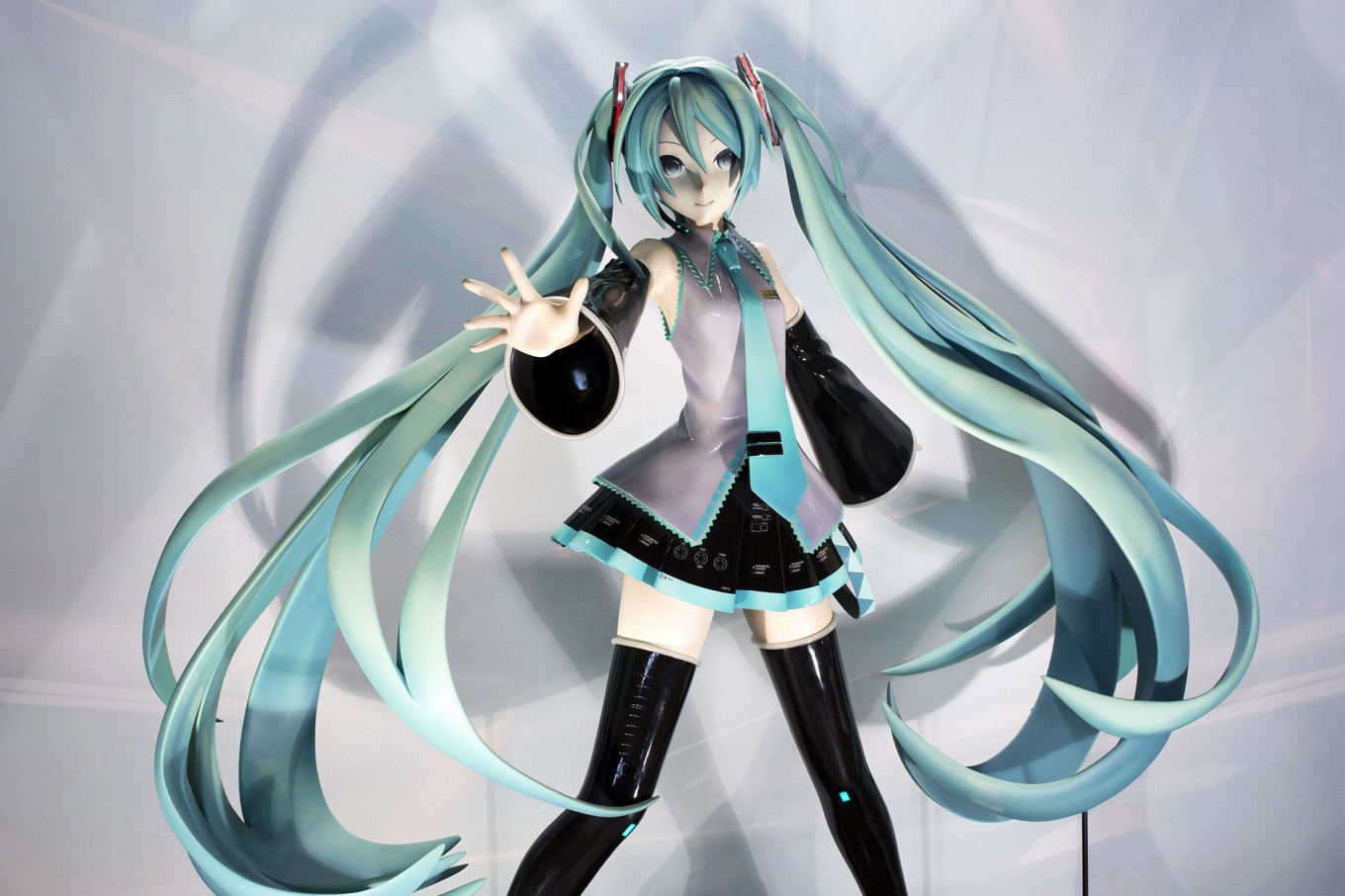Diehard fans turn virtual teen singer into Japanese mega-star
Change Size
 A Hatsune Miku figurine. (Bloomberg/Tomohiro Ohsumi)
A Hatsune Miku figurine. (Bloomberg/Tomohiro Ohsumi)
S
he wears extremely short skirts, sports blue pigtails to her knees and has the boundless energy of a playful puppy. During her 10-year career, she’s released more than 100,000 songs in a variety of languages and opened shows for Lady Gaga.
And yet Hatsune Miku, who boasts 2.5 million Facebook followers, doesn’t actually exist — at least not in the typical way we think of a flesh-and-blood diva.
Miku is a computer-simulated pop star created more than a decade ago by Hiroyuki Ito, CEO of Crypton Future Media in Sapporo, Japan. She started life as a piece of voice-synthesis software but since has evolved to become a singing sensation in her own right — thanks to the creativity of her legions of fans.
Crucial to Miku’s success is the ability for devotees to purchase the Yamaha-powered Vocaloid software and write their own songs for the star to sing right back at them. Fans then can upload songs to the web and vie for the honor of having her perform them at “live” gigs, in which the computer-animated Miku takes center stage, surrounded by human guitarists, drummers and pianists.
Ito describes the concerts as a collaboration of professional and amateur creators, both in terms of the music and the anime-style outfits Miku wears.
“A Hatsune Miku concert, rather than being a professionally produced concert with orders coming from the top down, is more of a collaboration of creators acting in concert with Hatsune Miku to share popular songs that fans love,” Ito explains.
Read also: Hatsune Miku turns tour guide for Japanese food trip campaign
“It’s really a kind of creative gathering of people such as songwriters, costume designers and illustrators.”
And it appears to be very lucrative, too, both for Crypton and some of those amateur songwriters, who have penned songs for Miku and then been plucked from obscurity by record companies looking for The Next Big Thing.
Crypton has sold 120,000 units of the Hatsune Miku software, which retails for $200, according to Ito. It also makes money through ticket sales and character licensing for commercial purposes.
As for the future of Hatsune Miku – whose name translates into English as “First Sound of the Future” – and Crypton, Ito has ambitious plans.
“We are trying to further develop [the] technology and get our voice synthesizer software as close as possible to the human voice,” Ito says.
“We will arrive at the point, though, where we have surpassed the human voice to create something that doesn’t exist. My hope is that this new technology will bring about a new kind of music.”









